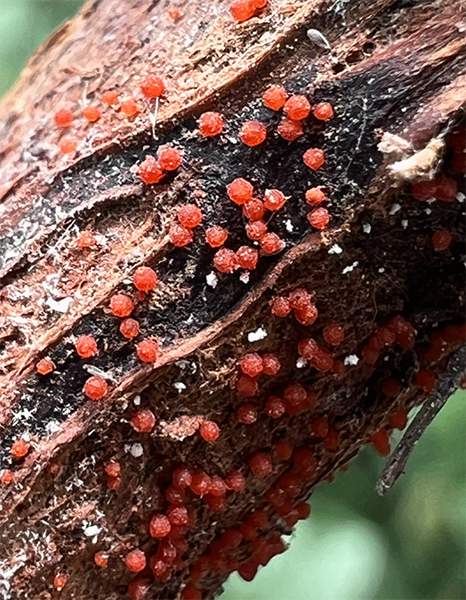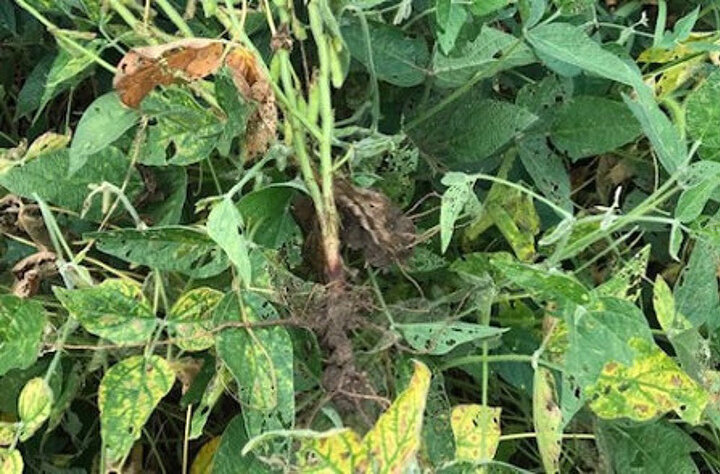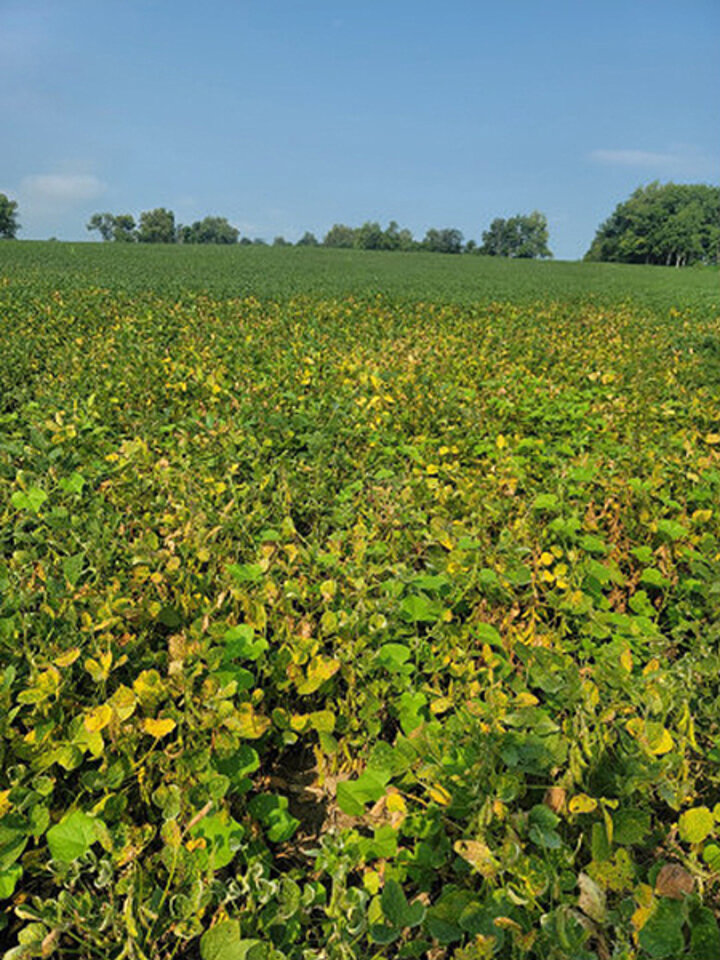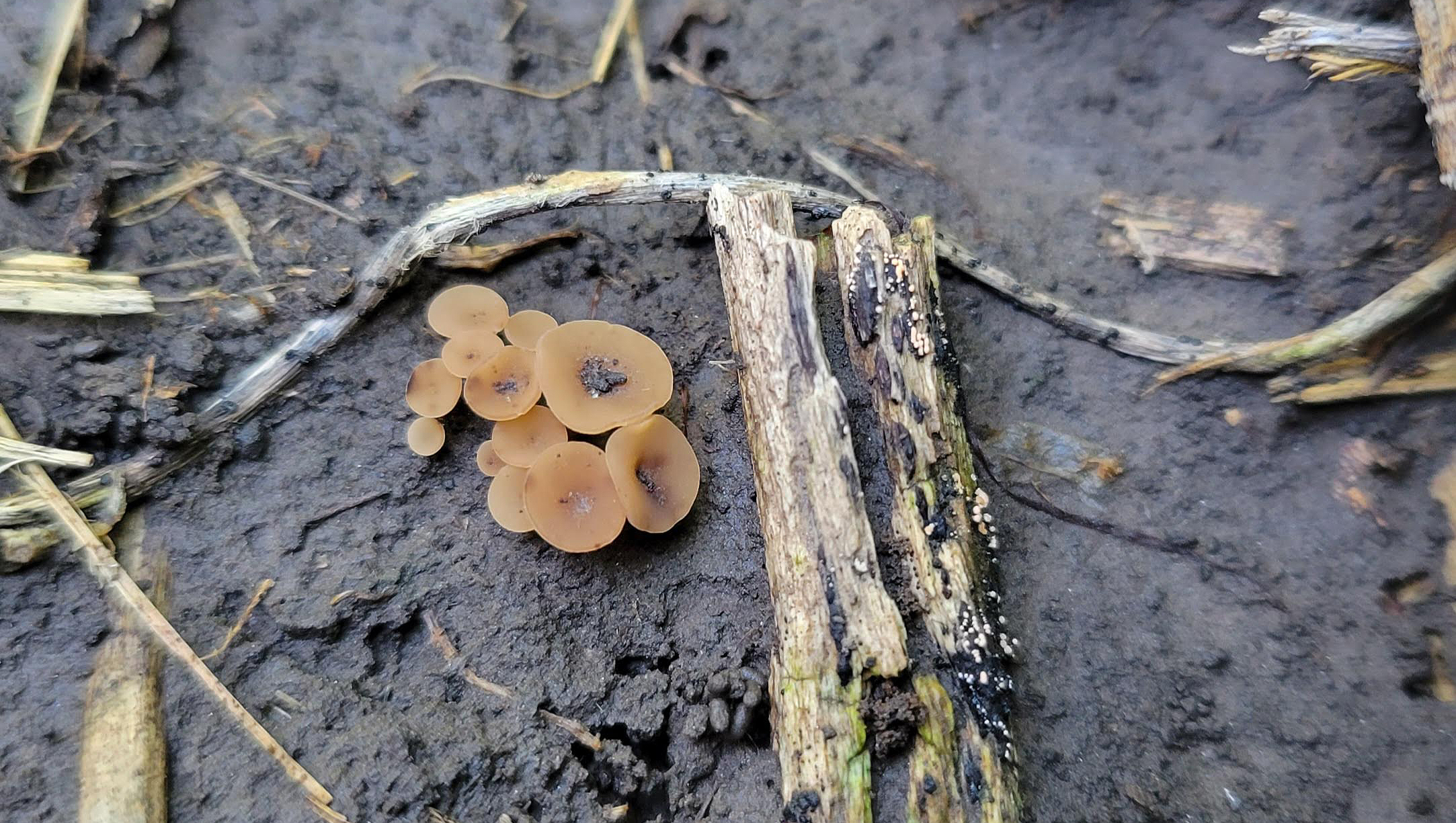By Dylan Mangel | Extension Plant Pathologist
Pathogen
Red crown rot (RCR) is caused by the fungus Calonectria ilicicola. Historically, reports of this disease were limited to the eastern regions of Louisiana, but in recent years it has expanded north into Missouri, Kentucky, Illinois, Indiana, Ohio, and the latest expansion includes Wisconsin and Minnesota. While it is not yet found in Nebraska, the nearest known infected field is less than 100 miles from our border. The Crop Protection Network features a map of current RCR distribution.
Disease Symptoms
RCR is often first noticed through foliar symptoms that resemble those of sudden death syndrome (SDS), brown stem rot (BSR), or triazole injury. Early symptoms appear as light green or yellow interveinal spots that expand and turn necrotic (brown and dead tissue). In some cases, foliar symptoms may be absent altogether.
To distinguish RCR from other look-alike diseases, examine the lower stem near the soil surface. Infected plants typically show a reddish discoloration at the stem base. Under warm, moist conditions late in the growing season, the discolored area may develop white fungal growth and small, red to rusty-brown spherical spore-producing structures slightly larger than this period. Infected roots are often rotted and can be easily pulled from the soil.



Favorable Environmental Conditions
This fungus survives in the soil as microsclerotia, which can persist for several years in the absence of a host. Infection occurs when conditions are warm and wet, particularly during the spring and early summer. Although soybean planting in Nebraska has generally trended earlier, RCR tends to favor warmer soil temperatures, meaning the disease may become more common in later-planted soybeans or years with extended warm, wet periods.
Management
Genetic Resistance
Commercial soybean varieties are not currently graded for resistance. There is potential for varietal differences or resistance but identification research will take time.
Cultural Practices
In In fields known to be infested with RCR:
- Avoid planting soybeans late into wet soils.
- Consult with local agronomists or seed advisors about varieties that have shown better performance under RCR pressure.
- Rotate soybeans with non-host crops to reduce inoculum levels in the soil.
Chemical/Biological Control
Several seed treatments have demonstrated effectiveness against RCR in research trials, and some products are now being labeled for its control. More treatment options are expected as additional labels are approved. University pathologists across affected states are continuing to collect efficacy data, which will be incorporated into the Crop Protection Network publication Fungicide Efficacy for Control of Soybean Seedling Diseases as new data become available: https://cropprotectionnetwork.org/publications/fungicide-efficacy-for-control-of-soybean-seedling-diseases
Additional Information
- Crop Protection Network Efficacy Guides, https://cropprotectionnetwork.org/publications/fungicide-efficacy-for-control-of-soybean-seedling-diseases
- Crop Protection Network Red Crown Rot Guide, https://cropprotectionnetwork.org/encyclopedia/red-crown-rot-of-soybean
- Nebraska Extension EC130, https://marketplace.unl.edu/extension/ec130.html
Soybean Diseases
- Soybean Diseases (Home)
- Anthracnose
- Bacterial Blight
- Bacterial Pustule
- Bean Pod Mottle Virus
- Brown Spot
- Brown Stem Rot
- Charcoal Rot
- Frogeye Leaf Spot
- Phytophthora Root and Stem Rot
- Pod and Stem Blight
- Purple Seed Stain
- Rhizoctonia Root Rot
- Sclerotinia Stem Rot
- Soybean Cyst Nematode (SCN)
- Soybean Mosaic Virus
- Soybean Rust
- Stem Canker
- Sudden Death Syndrome (SDS)
